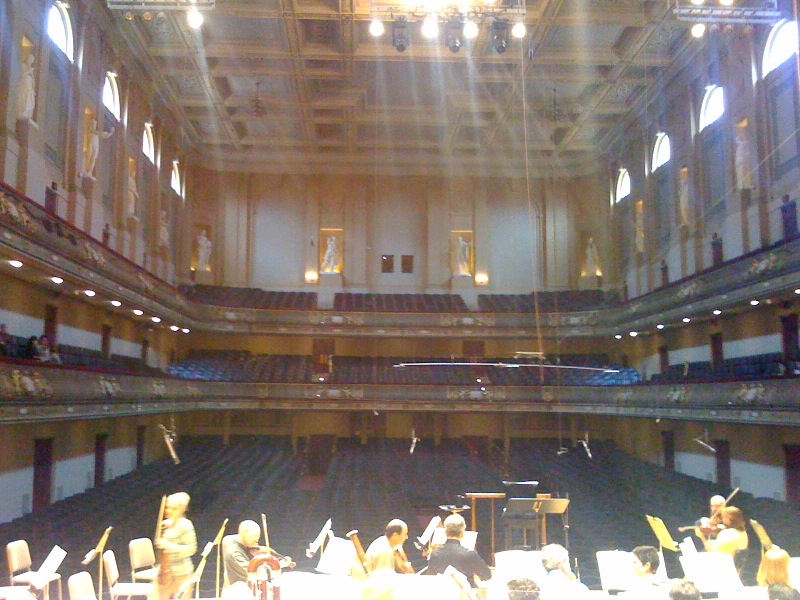I’ve been in rehearsals all week at Symphony Hall for the Tanglewood Festival Chorus’s first concert of the 2008-2009 Symphony Hall season, the Brahms Requiem with the Boston Symphony under James Levine. It’s an amazing work–I’ll try to describe it in more detail after our performances. But the two really amazing things for this weekend for me are the same things that Jeremy Eichler flagged in his review of Wednesday’s season opener, namely, Levine himself and the windows in the Hall.
Losing Levine to two months of cancer treatment after the opening of the Tanglewood season was a blow to audience and performer, although some of the resulting performances under guest conductors were still pretty spectacular. But it’s great to have him back and he is as energetic as ever.
The clerestory windows … well. Eichler gives the background in his article (part of the original design of the hall, they were covered over during World War II to comply with blackout requirements and never reopened). But what he doesn’t mention is the effect on the hall’s sound. The window openings had actually been plastered over, and the removal of all that plaster and introduction of glass (albeit a special glass that doesn’t resonate) means that there’s a new brilliance on the sound in the hall. Levine remarked on it, our director remarked on it, and it was even apparent on the stage in the reflected sound during our rehearsal. We’ll see tonight whether it makes as much difference when the hall is full of people.
It certainly has a striking visual effect, especially for a daytime rehearsal. I only had my iPhone on me so the picture I got was pretty poor, with lots of streaks from the light sources running through the pictures, but you can still see how alive the hall looks now.


Tim, The effect of the new windows during the evening was even more dramatic. The window arches are lit, as well as the two vertical details in each window. They look like bows with arrows aimed upward. It carries the eye, well, heavenward. The windows somehow seem to lift the significance of the statues, also lighted, to a more aspirational or heroic stance. Many of the statues have a vertical orientation, carried through by the windows. It all worked to lift the music to the spheres…..Martha
Mr. Jarrett– any relation to Keith? Well, seriously– have you had a chance to listen to the new BSO CD/download of the Brahms, released this month?
I have not yet listened to the official recording of the Brahms. I did download the Bolcom 8th recording and it’s much better than I remembered–though there are a few rough edges, there are some genuinely spinetingling moments in that recording. I’ll be checking out the Brahms later this week and will write a follow-up.
And: As far as I know, no relation to Keith Jarrett, but if you go far enough back in my genealogy I’m probably related to every Jarrett in the country.
In early returns, the Ravel D&C is getting great reviews.
As a CD addict, I’m sorry the BSO hasn’t released disc versions of the Bolcom and Mahler 6. Maybe they’ll do so down the road.